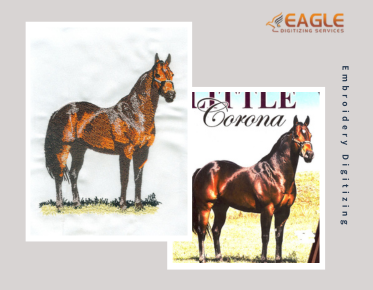Vector Graphics: Transforming Ecological Studies for Good
In the realm of ecological studies, vector graphics offer a powerful tool for transforming complex data into comprehensible and visually engaging formats. Unlike traditional methods, vector graphics enable precise representation and manipulation of intricate details, making them invaluable for environmental research and communication. Their scalability and clarity make them ideal for illustrating ecosystems, mapping biodiversity, and detailing ecological processes. If this post piqued your curiosity and you wish to learn more about vector artwork conversion, feel free to reach out to us.
How Visual Representation Enhances Environmental Research
Visual representation is crucial in environmental research, as it aids in the communication of complex ecological concepts and data. Vector graphics, with their ability to maintain sharpness and detail at any scale, provide clarity that helps researchers and the public alike grasp intricate environmental phenomena. This visual clarity enhances understanding, facilitates better decision-making, and fosters greater public engagement with ecological issues.
The Intersection of Art and Science: Why Vector Graphics Matter
Vector graphics bridge the gap between art and science, merging aesthetic appeal with scientific accuracy. They offer a means to create compelling visual narratives that are both informative and engaging. By combining artistic techniques with scientific data, vector graphics help translate abstract concepts into accessible visuals, making them a vital tool in ecological studies and environmental advocacy.
Applications of Vector Graphics in Ecology
Visualizing Ecosystems: How Vector Graphics Bring Nature to Life
Vector graphics bring ecosystems to life by providing clear and detailed visualizations of various environmental components. Through precise rendering of flora, fauna, and geographical features, vector graphics help illustrate the intricate relationships and structures within ecosystems. These visualizations aid researchers in understanding and communicating the complexities of natural environments.
Mapping Biodiversity: Using Vector Art to Track Species
Mapping biodiversity with vector art involves creating detailed and accurate maps that track species distributions and habitats. Vector graphics enable the creation of clear, scalable maps that highlight key information, such as species locations and environmental conditions. These maps are essential for monitoring biodiversity, conducting conservation efforts, and visualizing changes over time.
Illustrating Ecological Processes: From Pollination to Decomposition
Illustrating ecological processes such as pollination and decomposition with vector graphics provides a visual understanding of these dynamic interactions. By depicting these processes in detail, vector graphics help clarify how different species and environmental factors interact, contributing to a more comprehensive understanding of ecological systems.
Creating Detailed Ecological Maps
Designing Custom Maps for Ecological Studies
Custom maps designed with vector graphics allow for the precise representation of ecological data tailored to specific research needs. These maps can include various layers and details, such as vegetation types, water bodies, and land use. Customization ensures that the maps effectively communicate the relevant information for different ecological studies.
Using Vector Graphics to Highlight Key Environmental Features
Vector graphics are effective in highlighting key environmental features such as protected areas, wildlife corridors, and habitat zones. By using distinct colors, patterns, and symbols, vector graphics draw attention to important aspects of the environment, aiding in both analysis and communication of ecological information.
Incorporating Geographic Information Systems (GIS) with Vector Art
Integrating Geographic Information Systems (GIS) with vector art enhances the utility of ecological maps by combining spatial data with visual representation. GIS technology allows for the overlay of various data layers, which can be represented using vector graphics to provide a comprehensive view of ecological and environmental information.
Enhancing Data Visualization with Vector Graphics
Transforming Complex Data into Clear, Visual Representations
Vector graphics excel at transforming complex ecological data into clear, visual representations that are easy to interpret. By converting raw data into well-designed charts, diagrams, and maps, vector graphics facilitate a better understanding of trends and patterns, making it easier for researchers and the public to grasp and act on ecological information.
Creating Infographics for Ecological Data
Infographics created with vector graphics provide an engaging way to present ecological data and findings. These visual tools combine text, imagery, and data in a cohesive design that conveys information effectively. Infographics can highlight key statistics, illustrate ecological concepts, and communicate research results in an accessible and visually appealing manner.
Using Charts and Graphs to Display Trends and Patterns
Charts and graphs designed with vector graphics offer a precise way to display trends and patterns in ecological data. The scalability of vector graphics ensures that these visual elements remain clear and detailed, even when presenting complex datasets. Effective chart and graph design helps researchers and stakeholders quickly interpret data and make informed decisions.
Tools and Techniques for Vector Graphic Creation
Popular Software for Creating Vector Graphics: Illustrator, Inkscape, and More
Several software tools are available for creating vector graphics, each offering unique features and capabilities. Adobe Illustrator is a leading choice, known for its robust set of tools and professional-grade capabilities. Inkscape, a popular free alternative, also provides extensive vector graphic design features. Exploring various software options helps designers find the best tool for their specific needs.
Tips for Designing Effective Ecological Illustrations
Designing effective ecological illustrations involves attention to detail, accuracy, and clarity. Tips include using consistent color schemes, maintaining proportion and scale, and ensuring that visual elements are easily distinguishable. Additionally, incorporating feedback from ecological experts can help refine illustrations to better represent complex ecological concepts.
How to Integrate Vector Graphics into Research Reports and Publications
Integrating vector graphics into research reports and publications involves ensuring that graphics are high-quality, relevant, and properly formatted. Include vector graphics in reports by embedding them in appropriate sections, providing clear captions, and ensuring that they complement the text. This integration enhances the overall presentation and effectiveness of research findings.
The Role of Vector Graphics in Environmental Education
Creating Educational Materials: Engaging Students with Vector Art
Vector graphics play a significant role in environmental education by creating engaging and informative educational materials. Visual aids such as diagrams, maps, and infographics can help students understand complex ecological concepts and foster a deeper appreciation for environmental science. Effective use of vector art enhances learning and retention.
Using Vector Graphics in Public Awareness Campaigns
Public awareness campaigns benefit from the use of vector graphics to communicate environmental issues and promote conservation efforts. Eye-catching and informative visuals can capture attention and convey important messages about sustainability, habitat protection, and climate change. Vector graphics help create impactful campaign materials that resonate with a broad audience.
Designing Interactive Ecological Content for Web and Mobile
Interactive content designed with vector graphics enhances user engagement on web and mobile platforms. Interactive elements such as clickable maps, animated infographics, and dynamic diagrams provide an immersive experience that allows users to explore ecological information in a hands-on manner. This approach increases accessibility and understanding of environmental topics.
Ethical Considerations and Best Practices
Ensuring Accuracy and Scientific Integrity in Vector Illustrations
Maintaining accuracy and scientific integrity in vector illustrations is crucial for ensuring that ecological information is represented correctly. Adhere to best practices by consulting with ecological experts, verifying data sources, and avoiding exaggeration or distortion of information. Accurate illustrations uphold the credibility of scientific research and communication.
Avoiding Misrepresentation: Ethical Guidelines for Ecological Graphics
Ethical guidelines for ecological graphics involve avoiding misrepresentation and ensuring that visualizations accurately reflect scientific data. Misleading or exaggerated visuals can result in misinformation and undermine public trust. Follow ethical standards by presenting data objectively and clearly, and by acknowledging any limitations or uncertainties.
How to Use Vector Graphics Responsibly in Environmental Advocacy
Using vector graphics responsibly in environmental advocacy involves ensuring that visual materials support accurate and honest messaging. Avoid sensationalism and focus on presenting evidence-based information. Responsible use of vector graphics can effectively advocate for environmental causes while maintaining credibility and integrity.
Future Trends and Innovations
Emerging Technologies in Vector Graphics for Ecology
Emerging technologies are shaping the future of vector graphics in ecology, offering new tools and techniques for creating more dynamic and informative visuals. Innovations such as enhanced vector software features and advanced design tools enable more precise and creative ecological illustrations, pushing the boundaries of what is possible in environmental visualization.
The Role of Augmented Reality (AR) and Virtual Reality (VR) in Ecological Visualization
Augmented Reality (AR) and Virtual Reality (VR) are revolutionizing ecological visualization by providing immersive and interactive experiences. AR and VR technologies allow users to explore virtual ecosystems, interact with ecological data, and visualize environmental changes in three dimensions. These technologies enhance engagement and understanding of complex ecological concepts.
How AI and Machine Learning are Shaping the Future of Ecological Graphics
Artificial Intelligence (AI) and machine learning are transforming the creation and analysis of ecological graphics by automating design processes and improving data interpretation. AI-powered tools can generate detailed vector graphics, identify patterns in ecological data, and provide insights that enhance visualization. Embracing these technologies offers new possibilities for advancing ecological research and communication.
Challenges and Solutions
Common Challenges in Using Vector Graphics for Ecological Studies
Challenges in using vector graphics for ecological studies include ensuring accuracy, managing complex data, and addressing technical limitations. Overcoming these challenges requires careful attention to detail, collaboration with experts, and the use of appropriate tools and techniques. Addressing these issues helps ensure that vector graphics effectively support ecological research and communication.
Strategies for Overcoming Design and Technical Issues
Strategies for overcoming design and technical issues in vector graphics involve troubleshooting common problems, such as scaling and resolution issues, and seeking solutions through software updates and technical support. Additionally, collaborating with experienced designers and leveraging best practices can help resolve challenges and improve the quality of ecological graphics.
Ensuring Accessibility and Usability of Ecological Graphics
Ensuring accessibility and usability of ecological graphics involves designing visuals that are easy to understand and interact with. Considerations include using clear labels, providing alternative text for screen readers, and ensuring that graphics are compatible with various devices and platforms. Accessible and usable graphics enhance communication and support diverse audiences.
Vector graphics have a profound impact on ecological research and advocacy by providing clear, detailed, and engaging visual representations of complex data and concepts. They facilitate better understanding, support effective communication, and enhance public awareness of environmental issues. The power of vector graphics lies in their ability to bridge the gap between science and visual storytelling.
Encouraging the use of vector artwork in ecological studies and environmental advocacy promotes more effective and impactful communication of environmental issues. By leveraging the capabilities of vector graphics, researchers, educators, and advocates can create compelling visuals that foster greater understanding and engagement with ecological topics.



